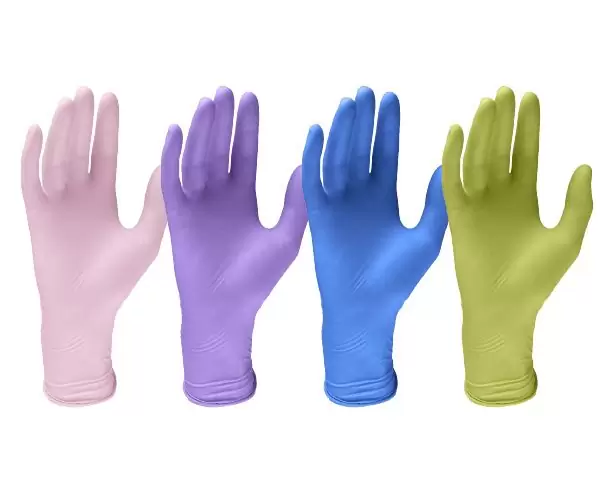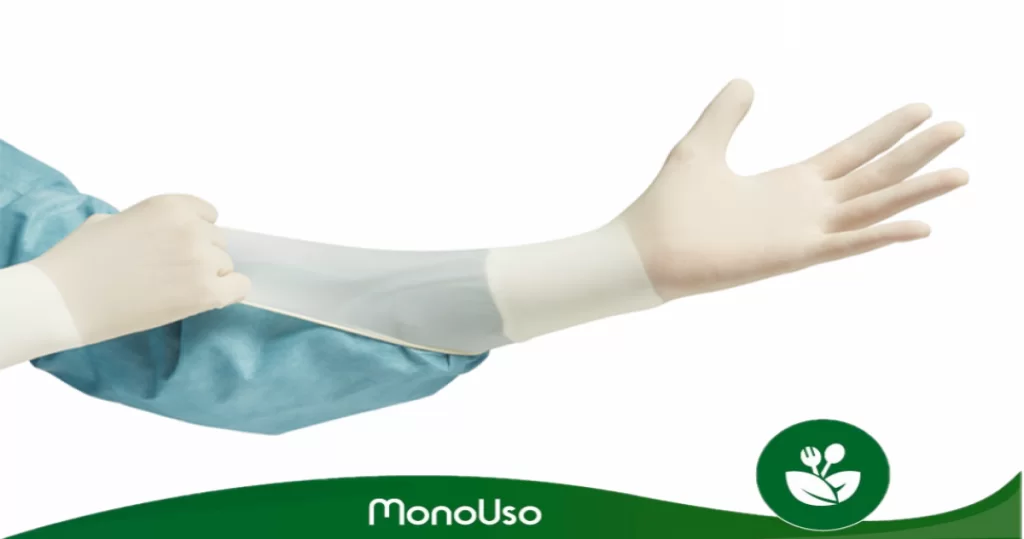If you have used powder-free latex gloves, this information is interesting for you. Health and cosmetology companies are the main ones in promoting the use of latex gloves for protection and hygiene of both members; doctor and patient, as well as the cosmetologist worker and customers.
This product is not only used in medicine areas and cosmetology, it is also applied in handling of frozen foods and products, in cleaning, criminal investigations, manicure and pedicure and even professional tattooists also use it.
Why are these gloves so employed? For their varied characteristics and properties, which make them very useful and practical.
Characteristics of latex gloves
They are manufactured using one of more elastic natural materials that can be found, in this case the natural rubber, this material helps to obtain a comfortable and adjustable product.
Among its features are good protection from hazardous substances, are very elastic, are soft, are easy to place and fit perfectly to the hands.
This class of gloves are very cheap and easy to obtain, are single use, sanitary and practically do not affect the sensitivity of touch when worn.
What do these gloves protect from? They protect against direct contact with blood, fluids, samples for medical studies or harmful substances such as acetone and methanol.
This prevents the person from contracting infections through direct contact with the substances already mentioned and also helps not to contaminate medical samples or evidence in the case of criminalists.
Latex gloves with or without talc?

There are two types of latex gloves: those with talcum powder inside and those without it. This talc or powder is nothing more than cornstarch and its sole purpose is to facilitate the placement of gloves.
Talc-free gloves are coated with synthetic polymers so that they can have the easy-to-fit characteristics of talcum gloves.
What’s the difference? Both types of gloves offer the same level of protection and hygiene; with or without talcum powder they continue to have the same strength, durability and functionality.
However, powdered latex gloves can cause allergies or irritations in some people, due to the origin of the powder you use. Even so, they are still very practical and useful.
Reasons to use powder-free latex gloves
The reasons are mainly to avoid the risks of corn starch. Although this powder greatly favors the placement and adjustment of the glove can cause some quite important drawbacks.
Wearing powder-free gloves avoids the health risks of cornstarch. These risks are explained below:
Reduce moisture and pH of the skin
Talcum powder can affect the skin of the hands, as it greatly reduces their humidity. This causes the skin to crack, dry out and weaken, making it prone to inflammation and eczema.
It is also easier for toxic agents, pathogens and allergens to penetrate the skin, apart from dermatitis. The alkalinity of the talc causes the pH to be alkaline for hours diminishing also the protection against fungi and bacteria.
Create a polluted environment
When wearing or removing a glove with talcum powder, dust particles may be released into the air and cause exposure to absorption.
So, if many such gloves are worn in a closed area, the amount of talc particles in the air increases creating an environment with a high concentration of allergens.
Logically, if the allergens are inhaled, it can cause allergic reactions, especially in the respiratory system, such as asthma attacks and spasms. It can also irritate the skin and eyes if they come in contact with them.
Increase sensitivity to latex
Direct contact with him may make the person who is allergic to latex hypersensitive to a minimal degree. Hypersensitivity may be up to type 1 with respect to direct contact.
Causing infections in postoperative wounds
Talc can cause infections or inflammation if they fall into a wound, as well as delay healing. It also increases the inoculation of bacteria causing abscesses.
Altering laboratory test results.
If, when a sample is being taken for laboratory testing, talc particles fall into the test, the results will be altered and therefore the diagnosis will be misdiagnosed.
Increase costs and time
As it is necessary to remove talcum powder from the hands after use, in view of the risks involved, sterile water and towels are used. This process generates more expenses and uses more time.
Talc-free latex gloves are a better option
It is true that talc-free gloves can be a little more complicated to adjust, but many risks of infections and allergies are avoided. Besides, they are cheaper and easier to obtain.
In fact, many hospitals are now opting for mandatory use of talc-free, low allergen latex gloves. Even today, campaigns are being developed to promote its use.

